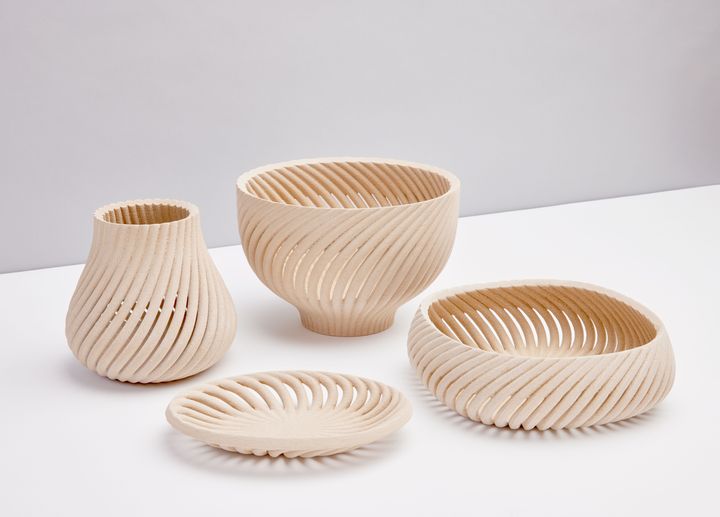
Desktop Metal unexpectedly announced a new wood 3D printing process called “Forust”.
No, it’s not a misspelled “Fortus”, it’s a new 3D printing process that attempts to capture some of the millions of tonnes of waste sawdust produced worldwide each year. If we’re going to cut down trees, let’s try to use as much of the tree as possible.
That’s the philosophy behind Forust, which has just been launched as a subsidiary of Desktop Metal.
Forust 3D Printing Process
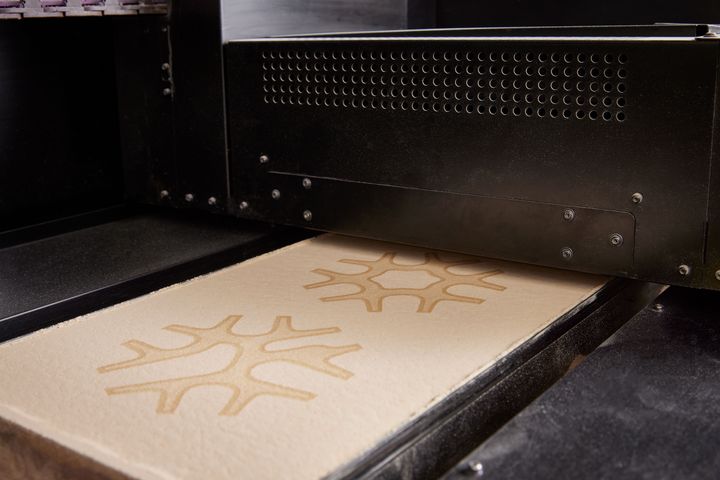
Forust uses a single-pass binder jet process. A tool head passes over a flat bed of powder, er, I mean sawdust. The jets selectively drop a bio-epoxy resin that holds sawdust particles together. After a recoating of new sawdust, another layer can be produced.
After 3D printing, the finished wood-like object can be extracted from the build chamber, which is at that point full of loose sawdust.
It’s not clear whether there is a post-processing step required, but it’s entirely possible there are none. The epoxy may solidify on its own, resulting in wood-like objects that act much like real wood.
According to Desktop Metal, Forust prints can be sanded, painted, drilled and cut just as you would do with natural wood products. This is an interesting aspect, because most workshops already have equipment to finish wood pieces, as that technology is quite ancient and well-understood. Smoothing polymers is often more difficult.
Forust 3D Printers
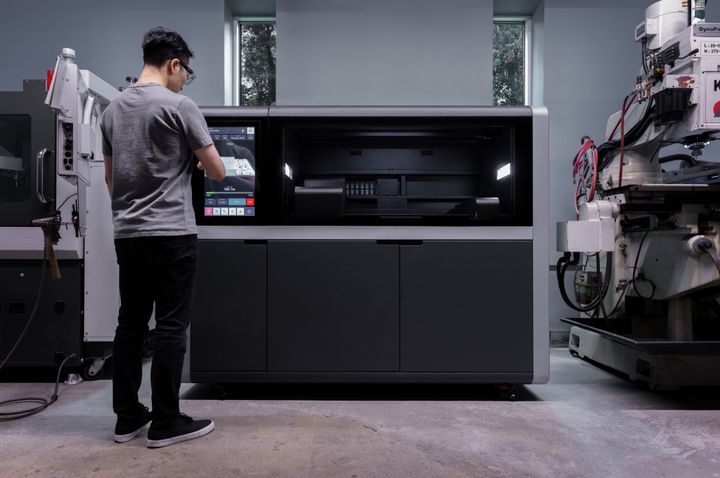
There seems to be two different hardware options for Forust 3D printing.
The first is to use a specially “Forust Configured” Desktop Metal Shop System. If you’re not familiar with the Shop System, it is a workshop-sized metal 3D printer that uses a binder jet process. It normally is shipped with a separate drying oven and furnace to complete the metal 3D printing process, but it’s likely those are not required in the Forust configuration.
The Shop System in Forust mode would not use metal powder, but instead use sawdust and be equipped with the appropriate toolheads for bio-epoxy jetting. Otherwise, the process is pretty much the same.
That’s one option for Forust 3D printing, but there’s another.
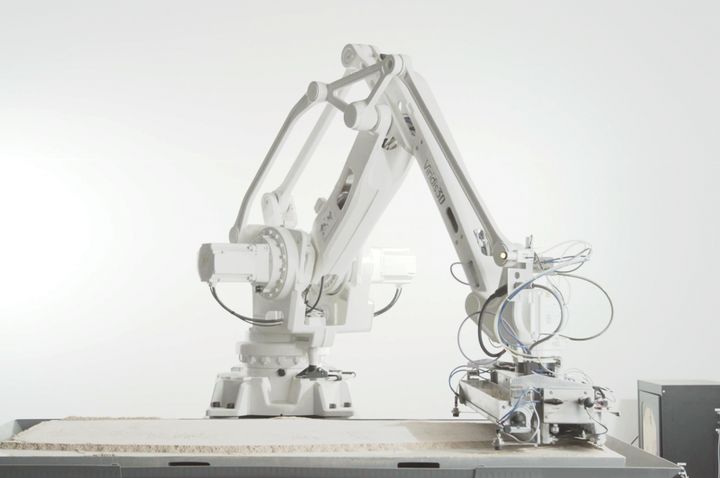
The new RAM 336 3D printer also handles the Forust process. However, it’s a very different machine: it uses a robotic arm to move the toolhead across a much larger build area. According to Desktop Metal, the RAM 336 has a build volume of 1800 x 900 x 300 mm.
Desktop Metal said the RAM 336 is the “mass production” option, as it’s larger than the Shop System in terms of build volume. However, it seems to me that it would be possible in the future to scale up the process considerably by either using a robotic arm with longer reach, or by employing multiple robots building separate zones.
I should mention there’s actually a third approach for obtaining Forust 3D prints: just buy them. Forust offers a small online store on their website where you can purchase samples of artistic Forust 3D prints. It’s not clear whether this will expand with works from other wood artists, but there is an option to upload your own design and have it 3D printed using Forust technology.
Forust Questions
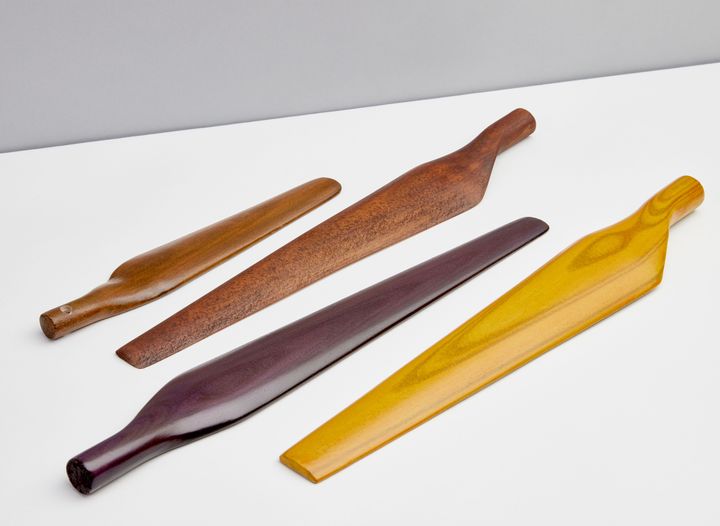
In any powder-based 3D printing process, there is the question of powder reuse. In polymer PBF systems, only a certain percentage of used powder may be reused in order to maintain part quality. The reuse ratio for Forust systems is unclear, but the good news is that sawdust is likely quite inexpensive.
Another question is the nature of the sawdust itself, as “sawdust” comes with varying qualities. Is there a specific particle size range required? Must Forust sawdust be supplied by Desktop Metal to meet quality standards? Is it possible to experiment with one’s own sawdust? Can you mix different types of sawdust?
A final question is about cost. We know that a metal Shop System costs something over US$150,000, so it’s likely the RAM 336 is a higher cost. We also don’t know the cost of sawdust. It could be inexpensive if you’re able to provide your own, or perhaps it could be more expensive if you must purchase it from approved sources. The cost of the bio-epoxy binder is also unknown at this point.
Forust Implications
While there have been minor forays into wood materials in 3D printing in the past, they haven’t really amounted to much more than curiosities and experiments. The Forust announcement changes that scene entirely, as it now presents a true option for actual, large-scale wood 3D printing in a sustainable manner.
There are many artists that work in wood, but not in polymers. They may be attracted to the 3D world because of the Forust announcement, as they can now produce works digitally that would be near-impossible or time-consuming to produce using natural wood and conventional woodworking tools.
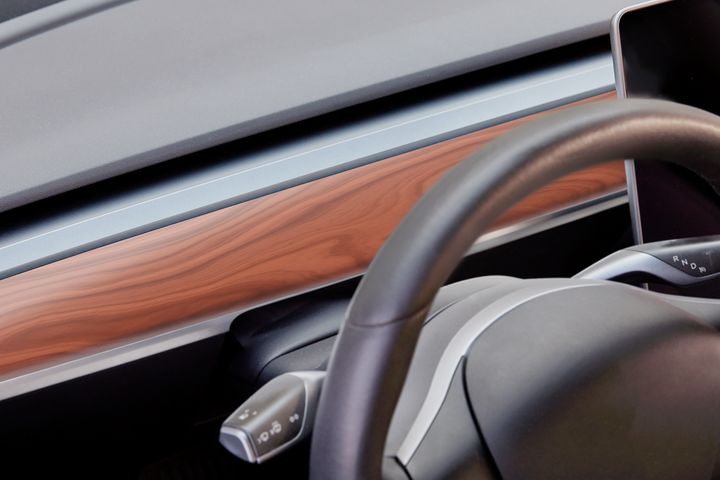
Forust could be particularly attractive to wood artists because one of its capabilities is to have control over wood grain effects. Here you can see a dashboard trim piece that has a very spanky grain, all entirely designed using Forust technology.
Another implication is that the choice of materials in many applications now has another option: wood. Wood has been used for building structures and objects for millennia, but it has not been a practical option in the digital 3D world until now. We may see many different applications emerge where wood material offers better engineering and aesthetic properties than polymers.
I’m quite interested to see Forust 3D print samples in person, and I’m certain many others will also be curious.
Via Forust and Desktop Metal
